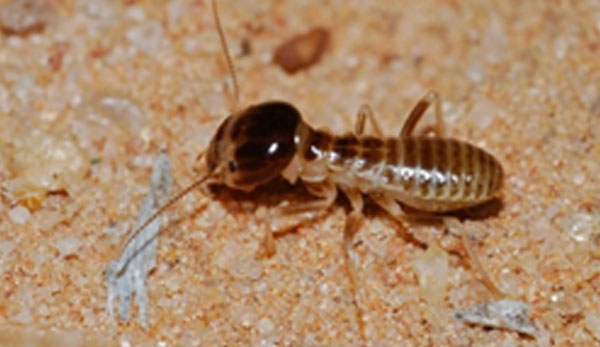The danger of termites
In South Africa there are mainly two groups of termites:
- Wood-inhabiting termites – nests in timber with no connection to the soil.
- Subterranean termites – nests in the soil and use soil tunnelling.
- Wood-inhabiting termites – Cryptotermes brevis – Dry-wood termites.
For the purpose of this article we will only focus on the Subterranean termites. In South Africa subterranean termites consist mainly of two species:
- Hodotermes – Harvester Termites
- Odontotermes latericius – Funnel Fungus Growers
Harvester termites diet mainly consist out of grass, living plant materials, cellulose such as paper as well as curtains, clothing and carpets containing linen or cotton can be damaged.
The Subterranean fungus grower’s main food source is wood. They only feed under the cover of clay canopies.
Signs that you have Harvester termites
- Wings – Swarming termites lose their wings.
- With Harvester termites damage to lawn will be clear (cut material)
- Cut grass and pieces of grass will be visible around nests.
- Harvester termites can also invade houses.
- Unexplained holes in your carpet.
- Photo – Mark Enslin
- Harvester Termite
Signs that you have Fungus Grower termites
- Mud tubes – Termites build dirt tunnels through which they travel and these termite mud tubes can easily be seen around foundation walls.
- Mud pushed out between floors and walls and visible mud in cupboards.
- This mud would contain mushrooms, which initially look like eggs.
- Swarms – When you suddenly have a swarm of winged termites coming into your home, you have a clear indicator that you might have termites in your home.
- Wings – Swarming termites lose their wings and crawl away. This is another clue.
- Visible mould and wood damage.
- Hollow wood – Wood sounds hollow when you knock against it.
- Mud canopy on a tree
- Visible mud and signs of mould
Pre-cautionary practices
- Building sites should be cleared of stumps, roots and other woody material.
- Structures should be well drained so that moisture is not retained.
- Foundations should be of concrete or masonry.
- Do not stack firewood next to buildings.
- Avoid over watering lawns.
- Fix water leaks.
- Do not plant trees or shrubs close to structures.
What to do if you have termites
If you discover termite damage, call in professionals to assess the damage and suggest solutions. Generally, with fungus growers, the whole house will have to be treated, or the termites will just move to another part of the house. Termites do not go away on their own. You need help.
Termite infestation treatment
Choose a reputable pest control company with experience in termite infestation control.
Treatment to stop a fungus grower termite infestation includes a chemical barrier through a drill and inject method around your home. As termites move through this soil, they will pick up chemicals and carry it to their colony, contaminating the nest.
Treatment to stop a harvester termite infestation consist mainly of baiting and/or direct nest treatments.
Pest control professionals use a variety of different treatments to kill existing termite colonies. Unfortunately, most people wait until they have termites before treating the infestation.
Contact A’Africa Pest Prevention when you need help with a termite infestation, or any other pest, in your home or business.
What not to do
Do not spray or drain a contact killer product onto or into the active area, as it will only kill the workers and the surviving instinct of the termites will cause the nest to split and this will result in increased activity.






